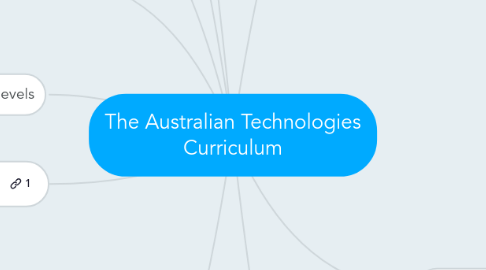
1. Key ideas
1.1. Australia needs enterprising individuals who can make discerning decisions about the development and use of technologies and who can independently and collaboratively develop solutions to complex challenges and contribute to sustainable patterns of living. Technologies can play an important role in transforming, restoring and sustaining societies and natural, managed, and constructed environments.
1.2. will ensure that all students benefit from learning about and working with traditional, contemporary and emerging technologies that shape the world in which we live
2. General capabilities
2.1. Literacy
2.2. Numeracy
2.3. Information and communication technology (ICT) capability
2.4. Critical and creative thinking
2.5. Personal and social capability
2.6. Ethical understanding
2.7. Intercultural understanding
3. Student diversity
3.1. Students with Disability
3.2. English as an additional language or dialect
3.3. Gifted and talented students
4. Cross-curriculum priorities
4.1. Aboriginal and Torres Strait Islander histories and cultures
4.2. Asia and Australia's engagement with Asia
4.3. Sustainability
5. Year levels
5.1. Foundation - Year 2
5.2. Year 3 - 6
5.3. Year 7 - 10
6. Achievement standards
7. Curriculum aims and objectives
7.1. develop the knowledge, understandings and skills
7.1.1. investigate, design, plan, manage, create and evaluate solutions
7.1.2. are creative, innovative and enterprising when using traditional, contemporary and emerging technologies, and understand how technologies have developed over time
7.1.3. make informed and ethical decisions about the role, impact and use of technologies in the economy, environment and society for a sustainable future
7.1.4. engage confidently with and responsibly select and manipulate appropriate technologies − materials, data, systems, components, tools and equipment − when designing and creating solutions
7.1.5. critique, analyse and evaluate problems, needs or opportunities to identify and create solutions
7.2. Design and technologies
7.2.1. produce designed solutions suitable for a range of Technologies contexts by selecting and manipulating a range of materials, systems, components, tools and equipment creatively, competently and safely; and managing processes
7.2.2. understand the roles and responsibilities of people in design and technologies occupations and how they contribute to society
7.3. Digital technologies
7.3.1. use computational thinking and the key concepts of abstraction; data collection, representation and interpretation; specification, algorithms and implementation to create digital solutions
7.3.2. confidently use digital systems to efficiently and effectively transform data into information and to creatively communicate ideas in a range of settings
7.3.3. apply systems thinking to monitor, analyse, predict and shape the interactions within and between information systems and understand the impact of these systems on individuals, societies, economies and environments
8. Strands
8.1. Knowledge and understanding
8.1.1. Design and technologies
8.1.1.1. Technologies and society
8.1.1.1.1. the use, development and impact of technologies in people's lives
8.1.1.2. Technologies contexts
8.1.2. Digital technologies
8.1.2.1. Digital systems
8.1.2.1.1. the components of digital systems: hardware, software and networks and their use
8.1.2.2. Representation of data
8.1.2.2.1. how data is represented and structured symbolically
8.2. Processes and production skills
8.2.1. Design and technologies
8.2.1.1. Creating solutions by
8.2.1.1.1. investigating and defining
8.2.1.1.2. designing
8.2.1.1.3. producing and implementing
8.2.1.1.4. evaluating
8.2.1.1.5. collaborating and managing
8.2.2. Digital technologies
8.2.2.1. Collecting, managing and analysing data
8.2.2.1.1. the nature and properties of data, how they are collected and interpreted
8.2.2.2. Digital implementation
8.2.2.2.1. the process of implementing digital solutions
8.2.2.3. Creating solutions by
9. Key Concepts
9.1. Creating preferred futures
9.1.1. Thinking is central
9.1.2. Creating sustainable solutions
9.2. Design thinking and design process
9.2.1. Design and technologies
9.2.2. Making and designing solutions
9.2.3. Skills that are transferable to other areas
9.3. Computational thinking
9.3.1. Digital technology
9.3.1.1. Organising data
9.3.1.2. Breaking down into components
9.3.1.3. Recognising patterns
9.3.1.4. Abstraction
9.3.1.4.1. Cognitive skill
9.3.1.4.2. Computational thinking
9.3.1.4.3. Problem solving
9.3.1.5. Data
9.3.1.5.1. Data collection
9.3.1.5.2. Data representation
9.3.1.6. Data interpretation
9.3.1.6.1. Patterns
9.3.1.6.2. Contexts
9.3.1.7. Specification
9.3.1.7.1. Algorithms
9.3.1.7.2. Implementation
9.3.1.7.3. how systems work
9.3.1.8. Implementation
9.3.1.8.1. Programming
10. Subjects
10.1. Design and Technologies
10.1.1. Engineering principles and systems
10.1.2. Food and fibre production
10.1.3. Food specialisations
10.1.4. Materials and technologies specialisations
10.2. Digital Technologies
10.2.1. Practical opportunities
10.2.1.1. Design thinking
10.2.1.1.1. innovative developers of digital solutions and knowledge
